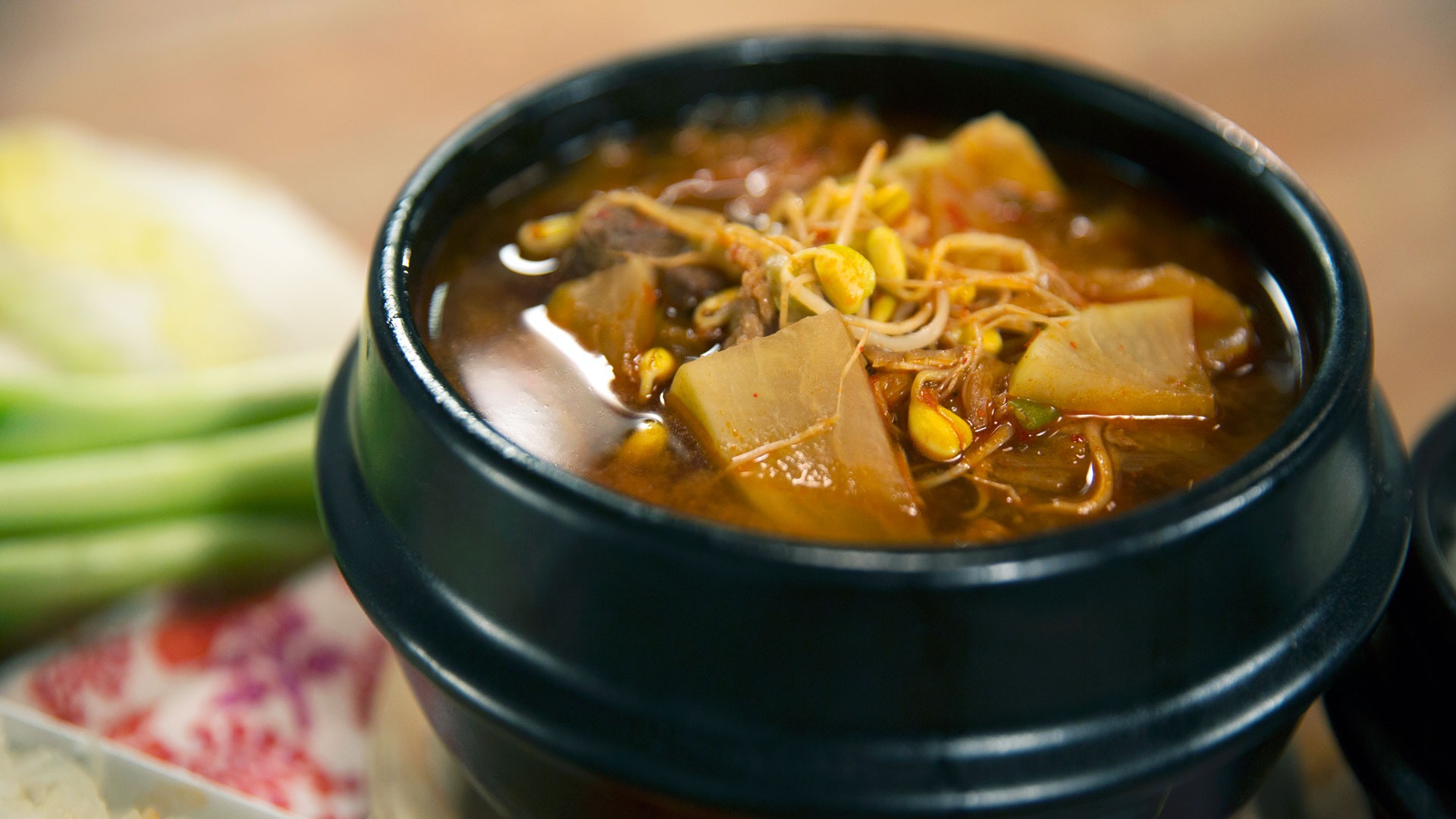Haejangguk
haejang guk, sulguk, hangover soup, 해장국
Haejang-guk or hangover soup refers to every kind of guk or soup eaten as a hangover cure in Korean cuisine. It means "soup to chase a hangover" and is also called sulguk (술국). It usually consists of dried napa cabbage, vegetables and meat in a hearty beef broth. One type of haejangguk, seonjiguk, includes sliced congealed ox blood (similar to black pudding) and another type, sundaeguk, includes a kind of blood sausage made with intestine stuffed with pig's blood and other ingredients. In the Nogeoldae, a manual for learning spoken Chinese published in the late Goryeo dynasty (918-1392), the term seongjutang (Chinese: 醒酒湯) appears. It means "soup to get sober" and is assumed to be the origin of haejangguk. According to the record, the soup consists of thinly sliced meat, noodles, scallions, and powder of cheoncho (천초) in a broth. The composition is same as the basic recipe of a present-day haejangguk.
Source: Wikipedia
Recipes




